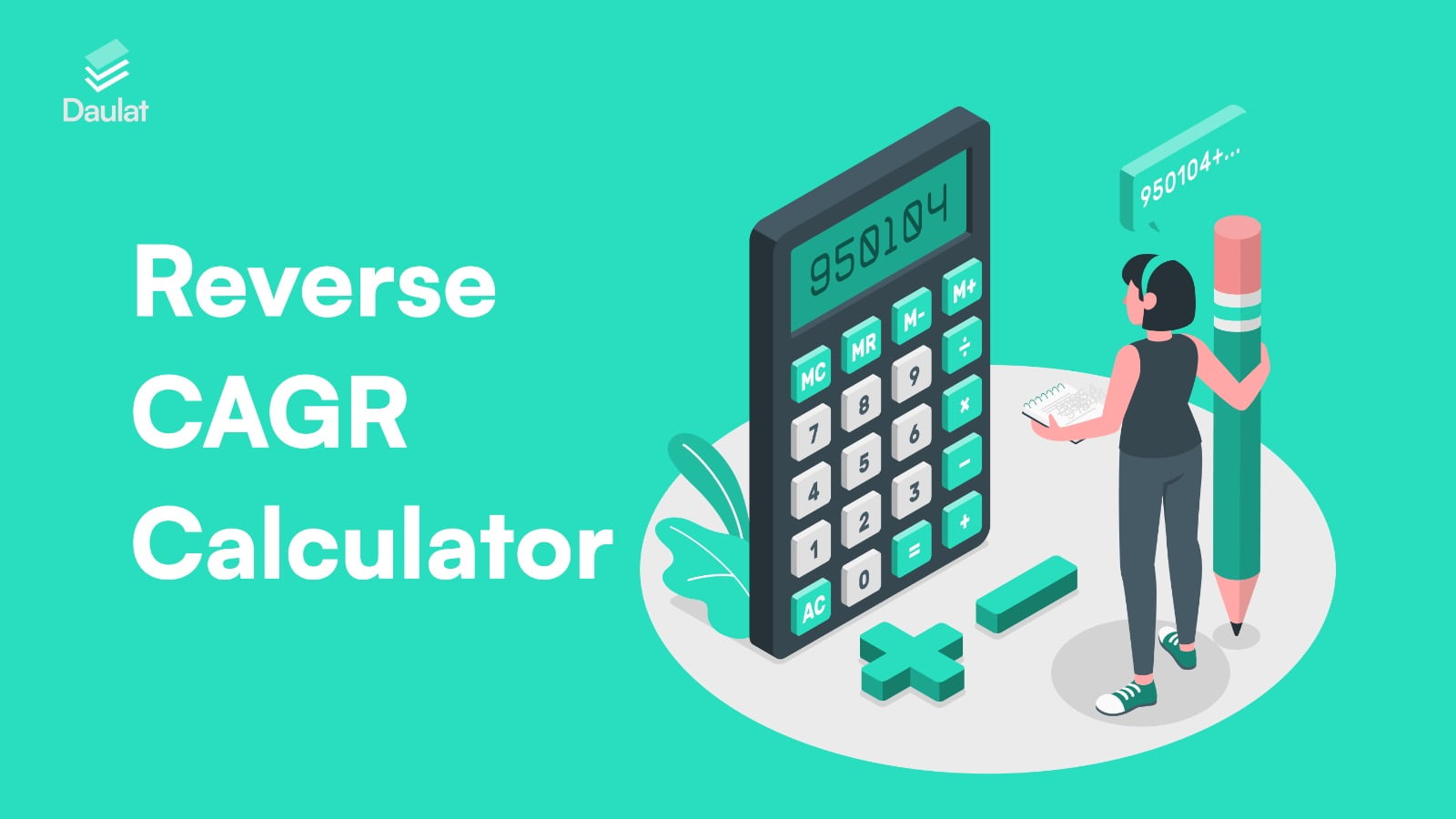Financial planning is an integral component of managing one’s finances and realizing long-term financial aspirations. Among the vital tools within this realm is the Compound Annual Growth Rate (CAGR), a metric used to gauge the yearly growth rate of an investment over a specific time frame. While calculating CAGR for a known investment is commonplace, comprehending the reverse CAGR calculator is equally beneficial. This article will delve into the concept of a Reverse CAGR Calculator, elucidate its significance, and provide guidance on its practical application.
Understanding CAGR
Before delving into the reverse CAGR calculator, it’s essential to briefly revisit what CAGR represents. The Compound Annual Growth Rate (CAGR) is a mathematical measure that computes the annualized rate of return of an investment over a stipulated period, assuming that the investment has experienced consistent annual growth or decline. CAGR proves to be a potent tool for evaluating the performance of investments, particularly when they exhibit varying annual returns.
The Relevance of a Reverse CAGR Calculator
The need for a reverse CAGR calculator arises in several real-life scenarios, owing to its versatility and practicality:
- Goal Planning: Individuals often harbor financial goals, like accumulating a specific sum for retirement or purchasing a property basically goal-based investing. To work towards achieving these objectives, the reverse CAGR calculator assists in determining the requisite annual growth rate needed to reach the target.
- Risk Assessment: A grasp of the reverse CAGR aids in evaluating whether one’s investment choices align with their financial objectives. It sheds light on the level of risk one must be willing to undertake to attain their financial goals.
- Comparing Investments: When faced with multiple investment options, computing the reverse CAGR facilitates a more comprehensive assessment of which investment aligns better with one’s financial aspirations.
- Legacy Planning: For those looking to leave a financial legacy, understanding the reverse CAGR can help in ascertaining the current investment needed to fulfill that legacy in the future.
Utilizing a Reverse CAGR Calculator
Employing a reverse CAGR calculator entails solving for the unknown variable, which is the annual growth rate (r), within the CAGR formula. The CAGR formula, for reference, is as follows:
CAGR = (Ending Value / Beginning Value) ^ (1/n) – 1
Where:
– Ending Value: The investment’s value at the end of the chosen period.
– Beginning Value: The initial value of the investment.
– n: The number of years under consideration.
To compute the annual growth rate (r), the formula is rearranged as follows:
r = [(Ending Value / Beginning Value) ^ (1/n)] – 1
Here is a stepwise guide for utilizing a reverse CAGR calculator effectively:
- Gather Data: Collect data pertaining to the ending value, beginning value, and the number of years the investment has been held.
- Input Values: Input the gathered data into the reverse CAGR formula.
- Calculate: Employ a calculator or spreadsheet software to derive the value of r.
- Interpret the Outcome: The result will signify the annual growth rate essential to transform the beginning value into the ending value over the chosen time span.
Conclusion
The reverse CAGR calculator proves to be an invaluable resource for individuals engaged in financial planning. It empowers them to gauge the attainability of their financial goals, make informed investment choices, and effectively strategize for their financial future. By mastering the usage of this calculator, individuals can seize control of their financial destiny and confidently pursue their long-term financial objectives.
Frequently Asked Questions
FAQ 1: What is the significance of a credit score, and how can I improve it?
Answer: Your credit score is a numerical representation of your creditworthiness and is used by lenders to evaluate your ability to manage debt responsibly. A higher credit score often leads to better loan terms and lower interest rates. To improve your credit score, focus on these steps:
– Pay bills on time.
– Reduce credit card balances.
– Avoid opening too many new credit accounts.
– Maintain a mix of credit types.
– Regularly check your credit report for errors.
FAQ 2: How does compound interest work, and why is it important for savings and investments?
Answer: Compound interest is the interest earned not only on the initial investment but also on the interest that accumulates over time. It’s crucial for savings and investments because it allows your money to grow exponentially. The longer you leave your money invested or saved, the more significant the compounding effect becomes, helping you build wealth over time.
FAQ 3: What’s the difference between stocks and bonds in investing?
Answer: Stocks and bonds are two common investment options with distinct characteristics:
– Stocks: Represent ownership in a company. Investors buy shares of a company’s stock and have the potential for capital appreciation and dividends. Stocks are typically riskier but offer higher potential returns.
– Bonds: These are debt securities issued by governments or corporations. When you buy a bond, you’re lending money and receiving periodic interest payments (coupon) and the principal back at maturity. Bonds are generally considered less risky than stocks but offer lower returns.
FAQ 4: How can I create a budget and stick to it?
Answer: Creating and adhering to a budget is crucial for managing your finances effectively. Here are steps to help you create and maintain a budget:
- Assess your financial situation: Determine your income, expenses, debts, and financial goals.
- Set specific goals: Define what you want to achieve with your budget, such as saving for a vacation or paying off debt.
- Track your spending: Record all your expenses for a month to understand where your money goes.
- Create a budget: Allocate your income to cover essential expenses, savings, and debt payments.
- Monitor and adjust: Regularly review your budget and make necessary adjustments to stay on track.
- Use budgeting tools: Consider using budgeting apps or software to simplify the process.
- Stay disciplined: Stick to your budget, avoid unnecessary expenses, and prioritize your financial goals.





